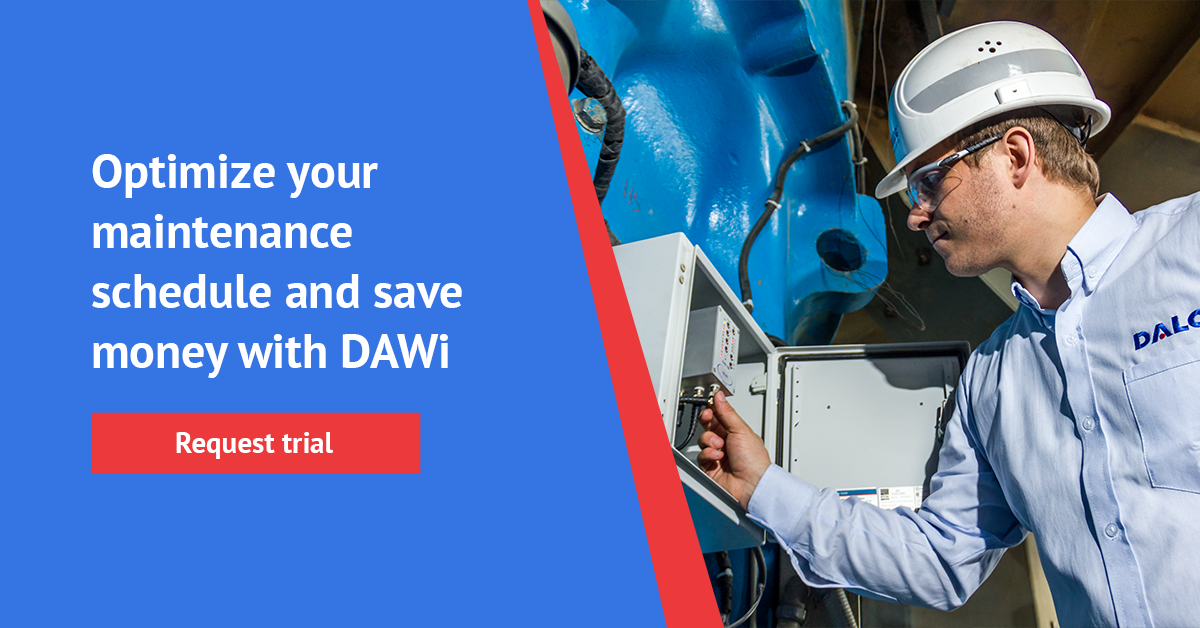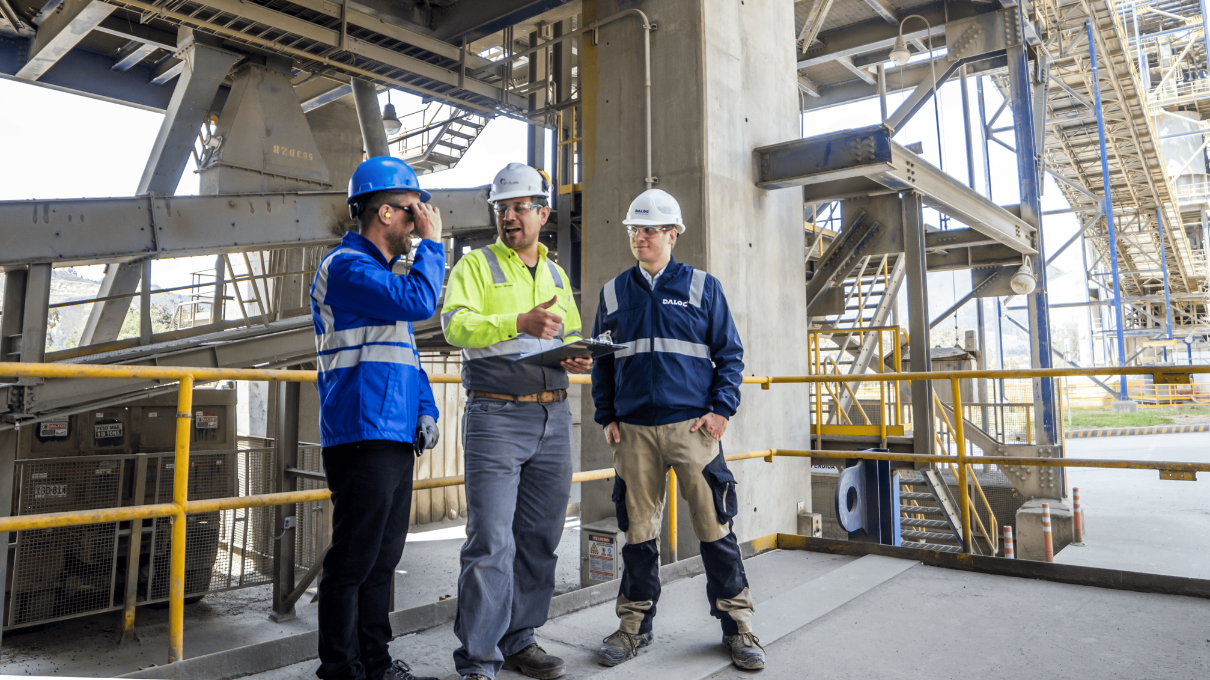Predictive Maintenance vs. Reactive Maintenance: What's the Difference
Maintenance is critical to ensuring machinery and equipment's smooth and reliable operation across various industries, including manufacturing, transportation, energy, and healthcare.
It involves a series of actions to keep equipment in good condition, detect and diagnose faults or defects, and repair or replace components as needed. Equipment failures, breakdowns, and downtime can occur without proper maintenance, leading to lost productivity, increased costs, and safety hazards.
There are two main approaches to maintenance: reactive and proactive.
Reactive maintenance, or "run-to-failure" or corrective maintenance, involves waiting for equipment to break down before taking action. This approach is often seen as a quick fix to a specific problem and can be less expensive in the short term. However, it can lead to more extended downtime, higher repair costs, and increased safety risks. Reactive maintenance can also cause a ripple effect on other systems or components that rely on the failed equipment, leading to cascading failures and more significant downtime.
In contrast, proactive maintenance is a more strategic and data-driven approach to prevent equipment failures and optimize performance. Proactive maintenance includes several methods, including preventive maintenance, condition-based maintenance, and predictive maintenance. These approaches use various techniques, such as inspection, monitoring, and analysis of equipment data, to detect and diagnose potential issues before they result in equipment failure. By taking a proactive approach, organizations can reduce downtime, lower maintenance costs, and improve safety while extending the lifespan of their equipment.
In this article, we will focus on the differences between predictive maintenance and reactive maintenance. We will explore each approach's essential features, benefits, and limitations. Ultimately, we will emphasize the importance of choosing the right maintenance approach for your organization and its potential impact on productivity, costs, and safety.
- What is Reactive Maintenance
- What is Predictive Maintenance
- Comparison and Contrast between Predictive Maintenance and Reactive Maintenance
- Why it Matter
What is Reactive Maintenance
Reactive maintenance, also known as "breakdown maintenance" or "run-to-failure maintenance," is a traditional approach to maintenance that involves waiting for equipment to fail before taking any action. This approach is a reactive response to a specific problem rather than a proactive strategy to prevent issues from occurring in the first place. Reactive maintenance may be necessary for some situations, such as emergency repairs or unexpected breakdowns. Still, it is generally considered a less effective and more costly maintenance approach compared to proactive strategies.
One of the primary drawbacks of reactive maintenance is that it can lead to longer downtime and higher repair costs. When equipment fails, it may take time to diagnose the problem, order replacement parts, and schedule repair work, resulting in significant downtime and lost productivity. In some cases, the downtime can last for days or even weeks, depending on the complexity of the repair work and the availability of replacement parts. Moreover, repairing equipment after a failure is usually more expensive than preventing the failure in the first place since it may involve replacing multiple components, repairing or replacing damaged parts, and testing the equipment thoroughly to ensure it is safe and reliable.
Another disadvantage of reactive maintenance is that it can pose safety risks to workers and equipment operators. When equipment fails unexpectedly, it can cause accidents, injuries, and even fatalities. For example, a sudden equipment failure in a manufacturing plant could result in a fire, explosion, or release of hazardous materials. Similarly, equipment failures in transportation or energy industries could result in accidents or environmental damage. Reactive maintenance may also lead to a loss of confidence in the reliability of the equipment, which can damage the organization's reputation and reduce customer satisfaction.
Reactive maintenance is a less effective and more costly approach to maintenance compared to proactive strategies such as preventive or predictive maintenance. Although reactive maintenance may be necessary for emergencies, it can lead to more extended downtime, higher repair costs, and safety risks to workers and equipment operators.
Organizations that rely on reactive maintenance may also experience reputational damage and reduced customer satisfaction. Therefore, it is vital to consider proactive maintenance approaches to prevent equipment failures and optimize performance.
What is Predictive Maintenance
Predictive maintenance, also known as "condition-based maintenance," is a proactive approach to maintenance that uses data analysis and machine learning algorithms to detect and diagnose potential equipment issues before they result in failures or breakdowns. Predictive maintenance is based on the principle that equipment failure is not random but rather a gradual process that can be detected and predicted by analyzing various data types, such as vibration, temperature, pressure, and other sensor readings. By analyzing this data, maintenance professionals can identify early warning signs of potential equipment problems and take corrective action before they result in downtime, repairs, or safety hazards.
One of the primary advantages of predictive maintenance is that it can significantly reduce downtime and maintenance costs. By detecting and diagnosing equipment issues before they result in failures, maintenance professionals can plan and schedule maintenance activities when it is most convenient. Additionally, predictive maintenance can help companies optimize maintenance activities by focusing on critical equipment components that require immediate attention rather than performing routine maintenance on all equipment components.
Another advantage of predictive maintenance is that it can improve safety and reliability. By detecting and diagnosing equipment issues early on, companies can prevent failures that could lead to accidents, injuries, or environmental damage. Additionally, predictive maintenance can help organizations extend the lifespan of their equipment by detecting and correcting issues that could cause premature wear and tear, reducing the likelihood of equipment failure.
Predictive Maintenance vs. Reactive Maintenance
Here are some key differences between the two methods:
Approach to maintenance: Reactive maintenance is a "breakdown maintenance" approach that involves responding to equipment failures as they occur. In contrast, predictive maintenance is a proactive approach that involves analyzing data and using machine learning algorithms to detect potential equipment issues before they result in failures.
Cost and efficiency: Reactive maintenance can be more costly and less efficient than predictive maintenance. In contrast, predictive maintenance can reduce downtime and maintenance costs by detecting and diagnosing potential equipment issues before they result in failures.
Safety and reliability: Reactive maintenance can pose safety risks to workers and equipment operators. In contrast, predictive maintenance can improve safety and reliability by detecting and diagnosing potential equipment issues before they result in failures.
Equipment lifespan: Predictive maintenance can help extend the lifespan of equipment by identifying potential issues early and taking corrective action to prevent equipment failures. In contrast, reactive maintenance can result in more frequent breakdowns and repairs, reducing the equipment's overall lifespan.
Data analysis: Predictive maintenance involves data analytics and condition monitoring tools to identify potential equipment issues, analyze equipment performance data, and predict failures. In contrast, reactive maintenance often involves limited data analysis and relies on reactive responses to equipment failures.
Planning and scheduling: Predictive maintenance involves planning and scheduling maintenance activities based on equipment conditions and potential failure risks. In contrast, reactive maintenance often involves unplanned downtime and emergency repairs.
Skill level: Predictive maintenance requires specialized knowledge and skills in data analysis, condition monitoring, and equipment diagnostics. In contrast, reactive maintenance may only need basic mechanical skills to perform repairs.
Root cause analysis: Predictive maintenance involves root cause analysis to identify the underlying reasons for equipment failures and implement long-term solutions to prevent future losses. In contrast, reactive maintenance often focuses on fixing immediate problems without addressing the root cause.
Equipment availability: Predictive maintenance can improve availability by identifying potential issues early and scheduling maintenance activities during planned downtime. In contrast, reactive maintenance can result in unplanned downtime and equipment unavailability, impacting production schedules and overall productivity.
Return on investment: Predictive maintenance can offer a higher return on investment (ROI) than reactive maintenance by reducing maintenance costs, improving equipment reliability, and extending equipment lifespan. In contrast, reactive maintenance may result in higher maintenance costs and lower ROI due to frequent equipment failures and downtime.
Implementing predictive maintenance programs can be challenging despite their potential benefits.
Learn more about Overcoming Common Challenges in Implementing Predictive Maintenance Programs
Why it Matters
The choice between reactive and predictive maintenance is critical for businesses and organizations because it can impact their productivity, profitability, and reputation.
Organizations should consider using condition monitoring tools, data analytics, and employee training to implement an effective maintenance strategy.
Condition monitoring devices such as sensors and software can help organizations collect and analyze data on equipment performance, detect potential equipment issues, and provide early warning signs of impending failures.
Data analytics can help organizations analyze large volumes of data, identify patterns, and predict potential equipment issues before they result in failures.
Finally, employee training can help organizations build a culture of maintenance excellence, where employees are trained to identify potential equipment issues, take corrective action, and continuously improve maintenance practices.
Learn how to choose the most cost-effective solution for Predictive Maintenance from our free eBook The Reliability Manager’s Plan: How to Choose the Most Cost-Effective Solution for Predictive Maintenance








